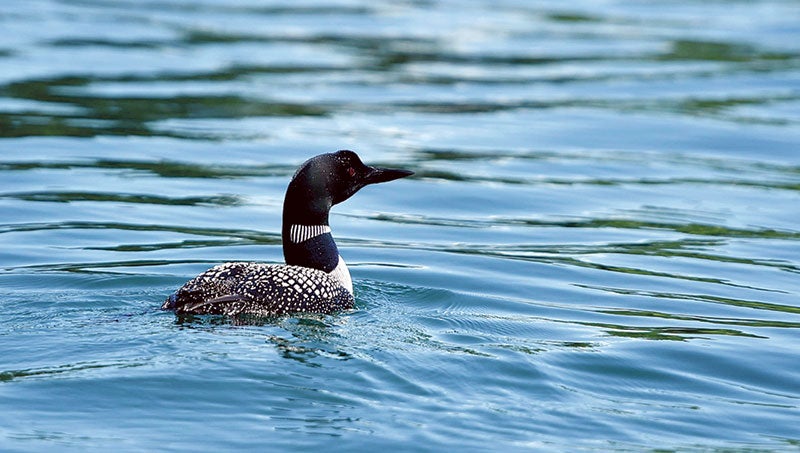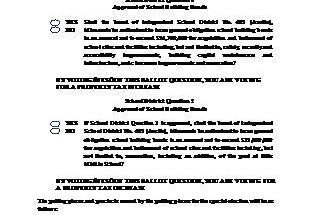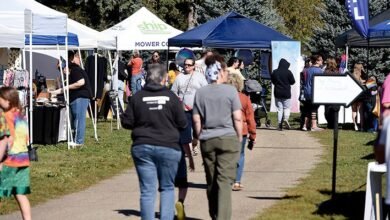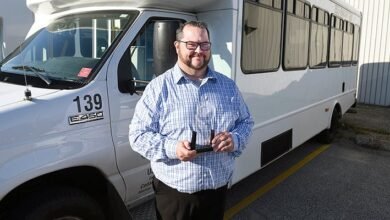Should Minnesota continue to put lottery dollars toward the environment?
Published 7:19 am Friday, November 1, 2024

- A loon swims on Bad Axe Lake in north central Minnesota. Herald file photo
By Dan Kraker
There’s a question tucked on Minnesota ballots this election that’s flying a bit under the radar, but has important implications for the state’s treasured outdoors.
Voters will decide whether a constitutional amendment first approved in 1988, that allocates 40 percent of the state’s lottery revenues into a trust fund aimed at protecting the state’s environment and natural resources, should be renewed for another 25 years.
In 1988 more than 70 percent of Minnesotans voted to support the constitutional amendment that created the Environment and Natural Resources Trust Fund. They extended it again by an even greater margin 10 years later.
Since then, more than $1 billion in lottery proceeds have been funneled into more than 1,700 projects around the state. The funding pays for scientific research that gathers foundational data on the state’s natural resources and investigates strategies to protect water and fight invasive species.
It’s also used to acquire land and protect and restore habitat, build trails and improve parks, and pay for environmental education and outreach efforts.
In recent years, funding has laid the foundation for a new National Loon Center in Crosslake, Minn., helped uncover new secrets about wolves living in northern Minnesota; aided efforts to save the state’s imperiled freshwater mussels; save rare plants and discover new species of bees.
The lottery money has also paid for years of research into some of Minnesota’s most complex environmental problems, including so-called “forever chemicals” such as PFAS, chronic wasting disease, invasive species and the decline of the state’s pollinators.
“The basic research that we’re funding provides long term benefits for not only the whole state, but the whole country,” said DFL state representative Rick Hansen of South St. Paul. Hansen also is vice-chair of the Legislative-Citizen Commission on Minnesota Resources (LCCMR), which makes funding recommendations to the state legislature.
“That stuff isn’t going to be happening anywhere else if we didn’t have these dedicated dollars for it,” Hansen added.
Now voters will decide whether to continue to set aside a significant chunk of lottery revenue “for the public purpose of protection, conservation, preservation and enhancement of the state’s air, water, land, fish, wildlife and other natural resources” for another 25 years.
To pass, a majority of all voters must approve the amendment. Leaving a ballot blank constitutes a “No” vote.
The amendment would also increase the amount of money that can be spent from the fund each year by an additional 1.5 percent. The extra $20 to $25 million annually would be used to fund a new community grant program designed to be accessed by smaller organizations that serve underserved communities.
A new 11-member advisory council would be created to recommend which projects to fund, which must include at least four tribal members and four members of a community of color.
The Commissioner of the Department of Natural Resources would sign off on the funding, rather than the legislature, which approves projects recommended by the LCCMR.
“That’s basically taking it out of the hands of the legislature. I don’t like that, taking the voice of the people away from this,” said State Sen. Steve Green of Fosston, a co-vice-chair of the LCCMR and one of several Republican legislators to speak out against the proposal.
Green said while he has issues with how much of the funding is currently allocated, he said he would have supported a simple renewal of the existing lottery amendment.
“Though this has been a popular initiative in the past, things have gotten out of control,” Green wrote in a letter to his constituents. “This ballot question goes far beyond its original bounds.”
Underserved communities
Advocates for the ballot question argue that small organizations serving rural and tribal communities and communities of color have historically been passed over for lottery funding.
A significant percentage of the dollars from the Environment and Natural Resources Trust Fund is typically awarded to researchers at the University of Minnesota, the Minnesota Department of Natural Resources, and other larger institutions with grant writing staff and other expertise.
They say the new community grant program would give smaller groups greater access to those funds moving forward, including organizations in rural areas.
“I think a lot of people don’t realize that most of the underserved communities are actually in rural Minnesota,” said DFL state representative Athena Hollins of St. Paul, who authored the bill to place the amendment renewal question on this year’s ballot.
“We definitely just have to do better in the way that we are allocating funds to communities that need them, because all Minnesotan communities benefit from them,” Hollins said.
But some Republicans and conservative groups, including the Center of the American Experiment, question the requirement that the new advisory group charged with recommending grantees must include a certain number of tribal members and people of color.
“The environment’s for everyone,” said Carrie Ruud, a former Republican state senator from the Brainerd area who served in leadership roles on several legislative environmental committees.
“Environmental justice and all that…that doesn’t belong in this. This is for everyone. We all put into it. It should be for everyone.”
More than 150 organizations have lined up in support of the constitutional amendment, including city and county governments, traditional conservation groups such as Pheasants Forever, Ducks Unlimited and The Nature Conservancy, as well as groups like Hospitality Minnesota, which represents resorts, campgrounds and other tourism reliant industries.
They’ve formed a coalition called Minnesotans for our Great Outdoors that has raised more than $700,000 to advocate for the amendment. There isn’t a formal group that’s been formed in opposition to the proposal.
“Regardless who you vote for on the top of the ticket, there’s a lot of compromise and a lot of shared ideology that we have with this amendment,” said Marcus Starr, campaigns director at Conservation Minnesota, which leads the coalition. Starr pointed out that the bill to place the amendment on the ballot had strong bipartisan support at the legislature.
Minnesota is unique in that it has two constitutionally dedicated funding sources for the environment: the lottery-backed trust fund, and the Legacy Amendment, which channels a portion of the state sales tax into projects supporting clean water, the outdoors, parks and trails, and arts and culture.
A stable source of funding has been crucial for the Minnesota Aquatic Invasive Species Research Center, which has received more than $24 million dollars in lottery funding through the Environment and Natural Resources Trust Fund since its founding in 2012.
“If it wasn’t for the ENRFT, I’m confident in saying that MAISRC would not be here,” said Nick Phelps, who directs the center at the University of Minnesota.
He said perhaps there’d be some research funded by the federal government. But he said then the science wouldn’t be focused on problems in Minnesota.
“We wouldn’t be working on zebra mussels in Minnesota lakes or a new infestation of starry stonewort in Cross Lake,” Phelps said. “We’re there to help Minnesotans because of Minnesota’s investment in this issue.”
The LCCMR has faced criticism over the years for spending too much trust fund money on research, and not enough on “boots on the ground” projects.
That dispute came to a head in 2018, when the state legislature diverted funding from the trust fund to help pay for wastewater treatment plants around the state. Environmental groups sued to block the transfer.
A provision in the amendment on this year’s ballot would forbid that kind of spending in the future.
“I would love to see that those dollars going into projects that actually help clean the water, instead of doing another study,” said Green. “They’ve got a study to study crevices in trees, to study flying squirrels. How is that going to clean our water?”
Nick Phelps said it’s fair to question the amount of money being spent on research. He acknowledges a lot of money is spent on it.
Bu the argues that to tackle big problems like invasive species, the state needs to find big solutions. And that’s only possible, he said, by stacking research, year after year, from one project to the next.
For example, Phelps said the U center he directs has made significant advances in research to chemically control zebra mussels in Minnesota lakes, funded in large part by lottery proceeds.
“We’ve been able to move research over the last 10 years from mason jars to some of the largest in-lake trials that have ever been conducted, Phelps said. “And it’s because of that funding.”
There’s currently about $1.9 billion in the Environment and Natural Resources Trust Fund. If the amendment fails, the remaining funds would continue to be dispersed to environmental projects.
But future lottery proceeds would all go into the state’s general fund.
Source link




